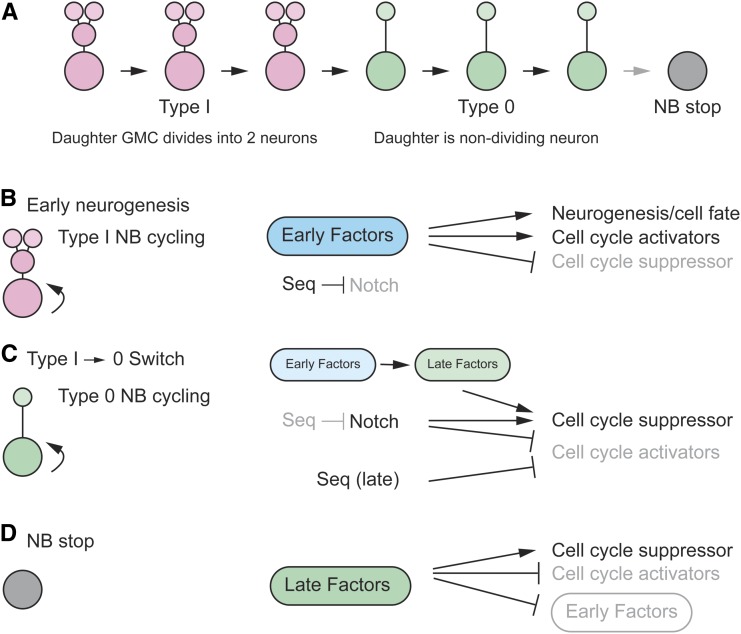Figure 8.
Control of Type I cycling and the Type I→Type 0 switch. (A) In NB lineages, Type I cycling leads to a Type 0 division mode, followed by a stop in NB division. Type I GMC daughters have limited proliferative potential, dividing once, whereas type 0 NB daughters do not divide. (B) High levels of early factors (dark blue) promote neurogenesis (Type I NB cycling) by activating cell cycle factors. They also influence neural cell fate. Notch triggers the Type 0 switch but is suppressed by Seq during Type I cycling. High activity (black letters); low activity (gray letters). (C) As early factor levels decline (light blue), late factor levels rise (light green), and this promotes the Type I→0 switch in combination with Notch signaling and late-acting Seq: these genes activate expression of the dap cell cycle suppressor. Notch and late-acting Seq repress expression of cell cycle activators. (D) The stop in NB proliferation is accompanied by high levels of late factors (dark green) activating the Dap cell cycle suppressor and suppressing cell cycle activators, while also repressing early factor expression. Adapted by permission from Elsevier: Developmental Cell (Bahrampour et al. 2017) copyright (2017).

